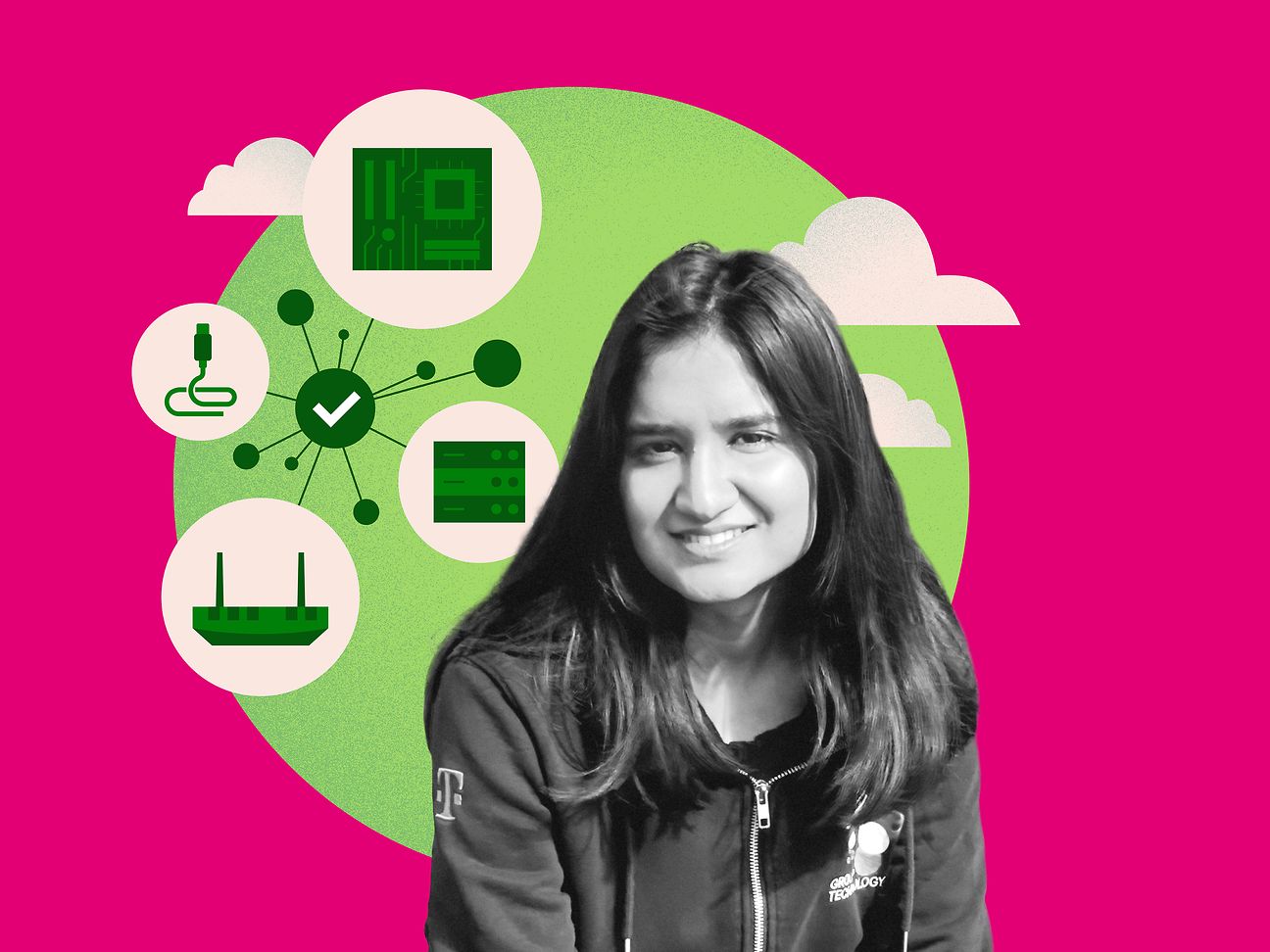When technology giants lend a hand ...
... you can move mountains together! That is Saima Ansari's mission. She is getting giant technology suppliers to join Deutsche Telekom in the circular economy and energy efficiency - and change the world together.
Saima, who are these huge suppliers?
Saima Ansari: They are network equipment suppliers that no network operator can avoid. They include Ericsson, Nokia, Cisco, HPE, IBM and Dell, for example. These companies or "vendors" are real giants in the market. And just like all other telecommunications companies, we depend on them to supply us with important network equipment.
Because without components - no networks?
Saima Ansari: Exactly! We need components and devices such as antenna stations, routers, switches and servers in order to build and operate our networks and provide our customers with the best performance. That's why we buy in large quantities from our technology vendors every year. However, these huge suppliers also leave a gigantic CO2 footprint.
The vendors have to take care of their own CO2 footprint, don't they?
Saima Ansari: Yes and no. We maintain close partnerships with our key vendors. They support us with their products in building the networks of the future. But in order to remain successful, we want and need to reduce our CO2 emissions by 55 percent by 2030. Across the entire supply chain - including network equipment suppliers.
That's only six years away - is that achievable?
Saima Ansari: Only if our suppliers join in. Because the majority of the CO2 savings have to be made by them. On our side, we can accelerate this development by purchasing differently from our vendors.
How can we do this?
Saima Ansari: In the past, we only asked whether a part was technically good and how much it cost. Now, sustainability determines 20 percent of our purchasing decisions. To be able to assess how sustainable a product is, we now ask our suppliers: How did you manufacture, package and transport the product? How energy-efficient is it? Can it be reused, refurbished or recycled at the end of its life cycle? We also ask our vendors whether they officially declare their company's CO2 emissions and whether they have net-zero targets. All this information ends up on a score card for each of our technology suppliers and flows into our purchasing decision.
What do our partners think?
Saima Ansari: They appreciate our initiative. However, they found our "green" criteria very strict at first. Many intensive discussions have gradually led to a rethink among our suppliers. Many have now started to check their emissions and report on them. This is important because we cannot reduce what we cannot measure. Recently, more and more partner companies have also set themselves net-zero targets and are working towards them with concrete improvements.
Can you give a few examples of such improvements?
Saima Ansari: Yes, for example in the packaging of Cisco routers. Until a few years ago, not only the routers themselves were packaged in plastic bags, but also the power supply unit and the cables - just to be able to stick a barcode on the plastic bag. We were able to convince Cisco to simply stick the barcodes around the cables. This immediately made the plastic superfluous. The new solution has now been introduced for all customers worldwide. This change will save more than 20 million plastic bags per year. That's more than 70 tons. Or take the example of Nokia: the packaging for network components has become significantly smaller. They now consist of cardboard including corrugated cardboard for the padding. Without disposable plastic. And beyond packaging: Together with our equipment suppliers, we are continuously optimizing energy consumption in our fixed and mobile network operations. Today, there are more and more innovative solutions for generating and storing renewable energy for use in mobile phone base stations.
Do you personally encourage specific improvements?
Saima Ansari: I inform our partners about progress in the industry. This tells them what approaches are available to save CO2. I also regularly present examples of best practice and ensure a regular exchange on environmentally friendly networks. My aim is to encourage every vendor to look for innovative solutions.
Last question, Saima: What three things would you like to see in vendor management?
Saima Ansari: Firstly, our partners should transparently check and communicate their CO2 emissions. Secondly, they should set themselves the same high environmental targets as we do. And thirdly, we should use AI for green purposes and at the same time make sure that the AI itself is as green as possible, for example by using energy-efficient algorithms.

